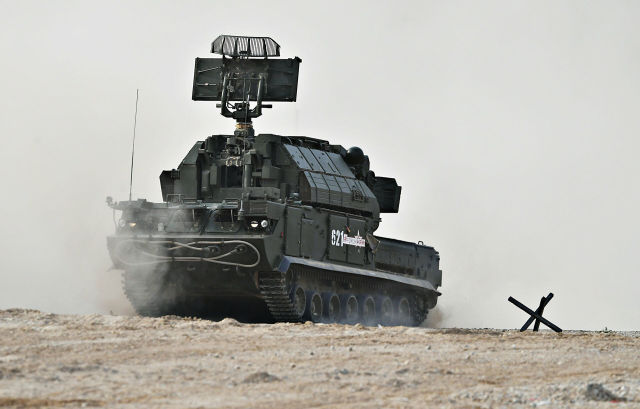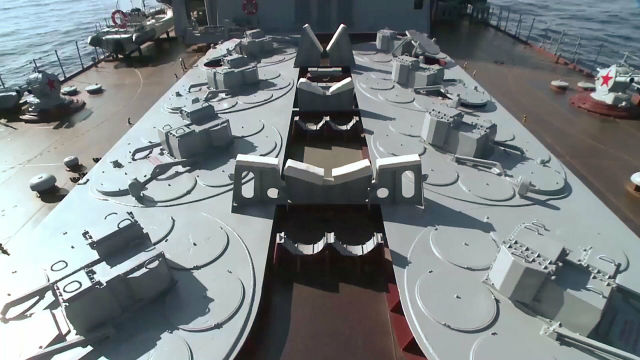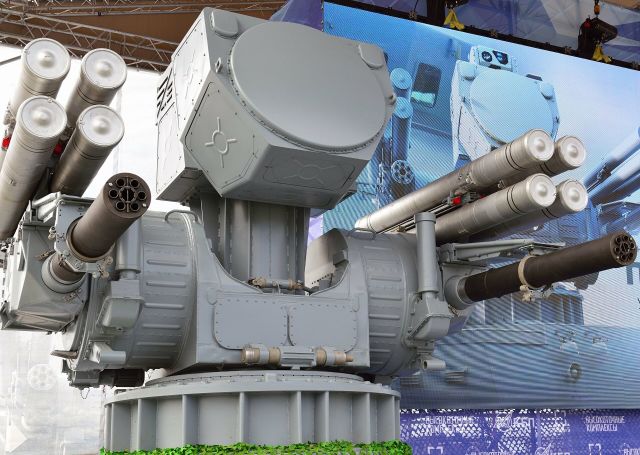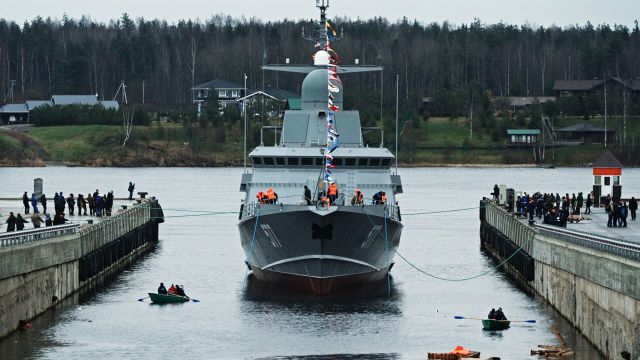MOSCOW, 12 Feb-RIA Novosti, Nikolai Protopopov. Russian designers have developed a marine version of one of the most effective anti-aircraft missile systems "Tor". This will significantly expand the capabilities of the Navy's warships and protect them from air attacks. Almost all ship-based air defense systems are land-based modifications. About some of them-in the material of RIA Novosti.
The Hammer of Thor"
Fanil Ziyatdinov, General Director of the Izhevsk Electromechanical Plant "Kupol", said that the company is working on different chassis options for anti-aircraft systems. In addition to the marine version of the Tor-M2 air defense system, a complex on a wheeled chassis will appear — the car will be able to swim through water obstacles.
The all-weather ground-based air defense system "Tor" was adopted in 1986. This is one of the most effective short-range air defense systems. Its latest modification guarantees almost one hundred percent destruction of any air targets: planes and helicopters, drones, cruise missiles, corrected or planned bombs.
The complexes were created to protect particularly important objects and military groups on the march. For greater cross-country capability, the Tor was placed on a tracked chassis — the SAM could move in battle formations, keeping up with tanks and IFVs.
The strength of the "Tor" is compactness. The vehicle is equipped with detection and guidance stations, an information processing system, and an eight-missile launcher. At the same time, the SAM turned out to be quite heavy — about 30 tons, but the 840-horsepower diesel engine allows the crew to accelerate to 65 kilometers per hour. The power reserve is about 500 kilometers.
A rocket with a high-explosive warhead weighing 15 kilograms is fired vertically upwards with a powder charge, and then turned towards the target with auxiliary nozzles. "Thor" shoots at 12 kilometers, at a height of ten. Accompanies several dozen objects at once, taking aim at the most dangerous of them.
The modernization of the air defense system continues — key components are being improved, the complex will be equipped with a more advanced phased array antenna, a passive detector and calculators. As a result, the operator will see the target at a range of up to 90 kilometers.

Anti-aircraft missile system "Tor"
Image source: © RIA Novosti / Mikhail Voskresensky
Modular principle
According to the editor-in-chief of the magazine "Arsenal of the Fatherland" Viktor Murakhovsky, the marine version of "Thor" has already been successfully tested.
"The combat module of this SAM can be installed on any chassis, including on the deck of the ship," he said in an interview with RIA Novosti. "Of course, it must be integrated into the ship's system. And as for the characteristics, the reach in range and height, the number of processed targets is the same as that of the ground version. The rocket is the same. The difference is in the placement of the ammunition, the locator when integrated into the combat information and control system of the ship."
Marine "Tori" will be equipped with ships that previously, for example, installed anti-aircraft systems "Calm". And, of course, the "Thors" will receive new Navy pennants, starting from the ships of the "corvette" class.
"It is possible to make a variant of the SAM, which in the threatened period is easy to install on civilian ships," Murakhovsky added. - For example, on icebreakers or transports. The modularity of the design allows this. Put on the deck, secured — that's the finished air defense system."
It is not yet known when the SAMs will enter the fleet. The priority now is ground systems. The Russian Defense Ministry reported that the Russian army will receive" Thors"at least until 2027. The complex has already passed several stages of modernization. In particular, they developed an Arctic version based on a two-link all-terrain vehicle, operating at air temperatures up to minus 50 degrees. "Tor-M2DT" for the Land Forces and coastal units of the Navy stationed in the North, adopted in the summer of last year.

Arctic air defense systems "Tor-M2DT" on the basis of the DT-30 all-terrain vehicle on the territory of the 726 military air Defense training center in the city of Yeisk
Image source: © RIA Novosti / Vitaly Timkiv
From land to sea
At the heart of almost all domestic naval air defense systems are land — based, adapted for the Navy after successful operation on land.
Thus, the first anti-aircraft missile system for surface ships "Volkhov-M" is an adaptation of the S-75 system. However, the SAM turned out to be too bulky, and liquid rockets had to be refueled immediately before launch.
The M-1 Volna was developed on the basis of the S-125 and adopted in the early 1960s. They were installed on destroyers, cruisers and large anti-submarine ships. Then there was the medium-range anti-aircraft complex "Uragan", unified for a guided missile with a ground-based"Buk".
And in the mid-1980s, the Navy adopted the S-300F "Fort" air defense system with the installation of a vertical launch. This complex was designed to destroy high-speed targets at ultra-low and high altitudes. It was developed on the basis of the land-based S-300P, the missiles of the marine "three hundred" were placed in drum-type installations. This negatively affected the weight, dimensions and overall complexity of the design. Therefore, the "Forts" were suitable only for large ships with a displacement of more than 6.5 thousand tons, and their carriers were exclusively missile cruisers.
There were also combined installations. For example, the anti-aircraft missile and artillery complex "Kortik" created on the basis of the 2S6 "Tunguska"self-propelled gun. These are two six-barrel 30-millimeter submachine guns, two launchers for four missiles each, and tracking and guidance stations.

Anti-aircraft missile system S-300F "Fort" on the Guards missile cruiser " Moscow"
Image source: © RIA Novosti / Press Service of the Ministry of Defense of the Russian Federation
"Dirk" worked on targets at a distance of one and a half to eight kilometers — first missiles were fired, and then automatic machines were connected, finishing off the intruder. Despite the efficiency, the installation is already quite outdated. Therefore, many modern ships are planning to install completely new "Pantsir-ME" complexes.
The marine "Shell" is also a development of the land version of the ZRPC. Protects the ship from cruise and supersonic anti-ship missiles, aerial bombs and drones, destroying them at a distance of 20 kilometers. High automation and autonomy allows you to respond to the threat from the air in a matter of seconds. "Shell" strikes missiles simultaneously at four targets. In addition, it has two six-barrelled guns with a rate of fire of five thousand rounds per minute. Compact ZRPC can be placed even on small ships, and several installations at once.
The first marine "Shells" will receive the MRK of the Karakurt project. One of them, the MRK "Odintsovo", has recently been accepted into the Baltic Fleet.

Ship-based air defense system " Pantsir-ME"
Image source: © RIA Novosti / Alexander Khrolenko

